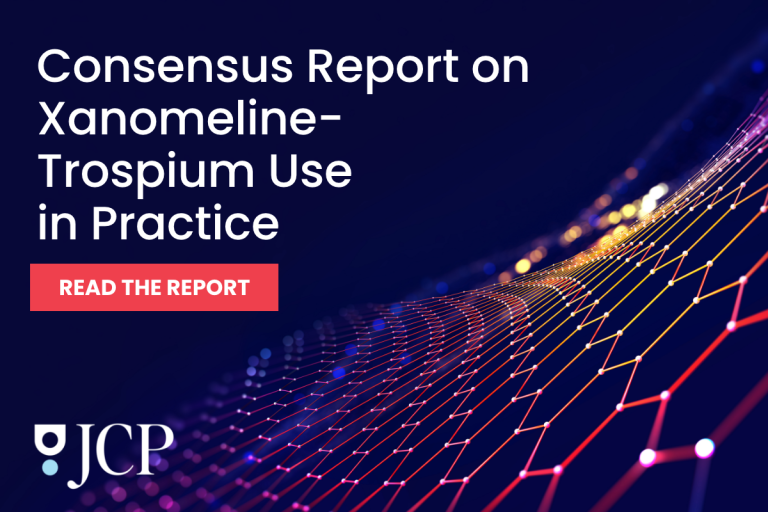Editor note: This spring, representatives of Psychiatrist.com attended two of the industry’s largest annual conferences. Over the next several days, we’ll present some of the dispatches from those events.
SCOTTSDALE, Ariz. – A new study, which researchers presented at this year’s American Society of Clinical Psychopharmacology (ASCP) Congress, threatens to upend how we look at patients. In short, the authors suggest that how patients discuss their own mental health could be just as important as what they’re saying.

The poster, “What’s in a Word?”, explores how people with bipolar I disorder (BP-I) talk about their treatment experiences as well as how clinicians interpret those conversations.
By getting a sociolinguistic expert involved, the researchers found that subtle cues in patients’ language – whether it’s a joke, use of passive voice, or the use of impersonal pronouns – can hint at larger (and undiscussed) concerns lingering just below the surface.
Methodology
The particular study, sponsored by Otsuka Pharmaceutical Co., involved five women with BP-I, one care partner, and eight healthcare professionals (HCPs), including psychiatrists and nurse practitioners. Participants took part in a two-hour, moderated virtual discussion about their experiences with BP-I treatment. The conversation included talk of challenges, preferences, and attitudes toward long-acting injectable medications.
HCPs watched the session live and later shared their clinical interpretations of the exchanges. A sociolinguistic expert also conducted a detailed discourse analysis of the transcript.
The researchers wanted to determine whether clinicians and language experts interpret the patients’ perspectives the same way. And whether a better understanding of patient language could lead to a better quality of care.
Words Have Weight
While the patients expressed gratitude for treatment benefits, such as mood stabilization and improved social engagement, they also shared concerns about side effects. They seemed especially worried about weight gain and problems sleeping.
One participant even remarked, “I’d rather be happy and chubby than skinny and suicidal.”
Healthcare providers recognized the value patients placed on treatment, but also wondered whether those perspectives would shift in the face of a manic or depressive episode.
The linguistic analysis revealed a more nuanced take. The sociolinguistic expert pointed out that patients often used humor and indirect language to cushion complaints, which the analyst saw as a way to avoid confrontation. By saying “you” instead of “I,” or softening criticism of their caregivers, patients signaled discomfort that clinicians might otherwise overlook in the absence of more attention to tone and phrasing.
“These subtle cues might be cries for help or attempts to express dissatisfaction without upsetting the therapeutic relationship,” the expert noted.
Confusion and Connection Around LAIs
One of the more surprising discoveries that the researchers stumbled onto was how little patients knew about long-acting injectable medications. Some had never heard of LAIs, while others found out about them from their peers or by browsing social media. Most admitted that they hadn’t heard of them from their healthcare providers.
The researchers added that the emotional reactions were equally enlightening. One participant linked LAIs to a traumatic hospital stay, describing a loss of bodily autonomy. Another used humor to explain how LAIs helped her feel less stigmatized. She no longer felt the need to hide pill bottles.
On the other hand, healthcare professionals focused more on medical logistics, such as side effect profiles and relapse prevention. As a result, they typically failed to notice the less-obvious emotional narratives.
Bridging the Communication Gap
Throughout the discussion, the patients consistently expressed a desire for better relationships with their providers. Many said they felt unheard or sidelined in treatment decisions. They called for more shared decision-making, clearer explanations, and information tailored to their needs. Specifically, they wanted to see things such as visual resources, peer testimonials, and more caregiver support during appointments.
Again, discourse analysis revealed how patients communicated these needs quietly, using toned-down language even when expressing strong dissatisfaction. Some employed repetition and rapid questioning, signaling a sense of urgency and frustration that often went unheard.
Care Implications
The findings suggest that maybe there’s a better way forward when talking about mental health care. By tuning in to how patients say things – and not just their words – clinicians might be able to unlock deeper insights into what their patients need, what’s making them hesitate, and hesitations, what could be triggering them emotionally.
“This isn’t about replacing clinical expertise,” the researchers wrote, “but enhancing it with deeper listening.”
They argue that recognizing patterns or conducting constructed dialogues can help clinicians identify unspoken concerns – especially about sensitive topics.
Ultimately, the study concludes that language is more than a vehicle for clinical information. It’s a window into lived experience. By meeting patients in that space, providers can do more than just improve treatment adherence. It can help them build stronger, more empathetic relationships.
“Yes, HCPs can interpret what patients say from a medical standpoint,” the authors wrote. “But greater awareness of linguistic subtleties allows for a more compassionate and comprehensive approach to care.”
Further Reading
Ketogenic Diet Shows Promise for Bipolar Disorder
Suicide and Benzodiazepine Use in Veterans With Bipolar Disorder
Semaglutide-Induced Euphoria in a Patient With Bipolar Disorder



